Baking bread is an exact science. Every ingredient that is added to the dough plays a specific role in shaping the flavor and texture of the finished loaf. Add an ingredient in the wrong quantity, at the wrong time or using the wrong technique, and the results will be altered. Chewy breads get their characteristic texture from gluten, so it is important to choose ingredients and mixing techniques that will contribute to the development of a strong gluten network.
Choose the Right Flour
One of the first things to consider when making bread from scratch is the type of flour to use. Different flours have varying amounts of protein; the higher the protein content of the flour, the stronger the gluten it will produce. Bread flour and all-purpose flour are higher in protein than other flours, making them a good choice for chewy loaves. Cake flour, by contrast, is a low-protein flour, so it produces a softer, more cake-like loaf. To make chewy bread, use bread flour or all-purpose flour.
Add Some Salt
Gluten is formed when water is added to wheat flour; the water allows the glutenin and gliadin proteins in the flour to bond with each other and form a complex network of gluten. Adding salt to your bread dough can increase its chewiness because the electrical charges in the salt prevent the electrically charged portion of the glutenin proteins from repelling one another. That means the glutenin proteins can bond more closely with one another and form a stronger gluten network. Make bread chewier by adding ¼ teaspoon of Kosher salt for each cup of flour used.
Avoid Sugars, Fats and Eggs
Some ingredients actually weaken the gluten network by making it more difficult for the glutenin and gliadin proteins to bond. Avoid ingredients such as sugar, butter, oil and eggs when making chewy bread. Brioche, for example -- a bread that includes butter, sugar and eggs -- is very soft and cake-like while a French baguette, a loaf made with little more than flour, water and yeast, is crusty on the outside and chewy on the inside.
Knead the Dough
Whether you knead the dough by hand or in an electric stand mixer, the process of stretching and folding the dough is one of the keys to developing a strong gluten network. As the dough is kneaded the chains of proteins stretch out side-by-side and form strong end-to-end bonds. For a chewy loaf of bread, knead the dough until it is very elastic and has a smooth, glossy appearance.
Bake with Steam
Chewy artisan loaves of bread were traditionally baked in clay, stone or brick ovens. The advantage to baking bread in this type of oven is that steam can circulate in the oven chamber as the bread bakes; the steam forms a thin film on the surface of the loaf, which contributes to the way that the crust forms. These same results can be achieved in a metal oven at home using an oven-safe skillet and ice cubes. Simply place the skillet into the bottom of the oven as it preheats. When the bread is placed in the oven to bake, add a few ice cubes to the hot skillet to create steam inside the oven chamber. This will help the loaf of bread puff up as it bakes and give the finished loaf a crusty exterior.
Store It Correctly
After bread is baked, it begins to lose moisture. This process is known as staling. To keep chewy loaves of bread crisp, avoid storing them in the refrigerator, which causes them to them stale more quickly. Instead, store them at room temperature in a breadbox or brown, paper bag. If the crust has softened somewhat, put the loaf into a 400-degree oven just until it is heated through; the bread will have nearly the same texture as when it was first baked
Related Articles

What Are the Causes of Pie & Pastry ...

How to Make Bread Tender

Can I Substitute Bleached for ...

How to Bake Bread in the Oven
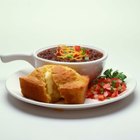
How to Make Cornbread in a Cast-Iron ...

Can You Substitute Yogurt for Milk in ...

Does Yeast Cause Holes in Bread?

How to Freeze Brioche
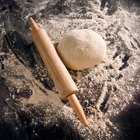
How to Preserve Dough That Has Risen

How Many Calories in Gluten-Free Bread?
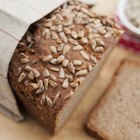
Russian Rye Bread vs. Pumpernickel

What to Do With Pizza Dough When You're ...
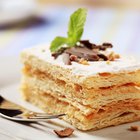
What Is Docking Used for in Baking?

How to Get Pizza Crust to Brown

Can Fast Acting Yeast Be Used in Place ...

What Is the Difference Between a Bagel ...

Why Bread Dough Does Not Rise

What Is Artisan Bread?

How to Bake Bread in a Clay Pot
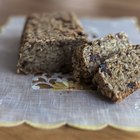
Gluten-Free Bread Without Eggs
References
Writer Bio
Kristie Collado is a graduate of the International Culinary Center and holds a Master of Arts in food studies from NYU. She has worked at the 21 Club, interned at the Hearst Corporation, and was one of The Daily Meal's former Cook editors. She is currently working on writing her first cookbook.